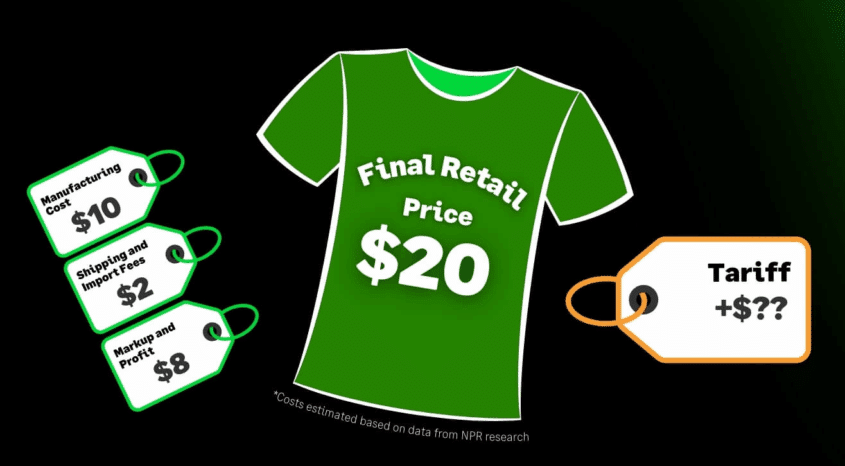Efficient logistics are essential for businesses looking to scale and meet customer expectations. Third-Party Logistics (3PL) providers help by managing key operations like warehousing, inventory control, order fulfillment, and transportation. Instead of handling these processes in-house, companies partner with 3PL providers to streamline supply chain management and improve overall efficiency.
In this blog, we’ll explore what 3PL is, how it works, its key benefits, and how to choose the right 3PL provider to optimize your supply chain.
What Is 3PL?
Third-Party Logistics (3PL) is a service that allows businesses to outsource key logistics functions, including warehousing, inventory management, transportation, and order fulfillment. Instead of handling these processes internally, companies partner with specialized logistics providers to improve efficiency and scalability.
A 3PL provider acts as an intermediary between businesses and their customers, ensuring that products move seamlessly from warehouses to end-users. Whether it’s storing inventory, coordinating shipments, or managing returns, 3PL providers help businesses streamline their supply chain without the need for in-house logistics infrastructure.
To better understand where 3PL fits into the logistics landscape, it’s helpful to distinguish it from First-Party Logistics (1PL), Second-Party Logistics (2PL), and Fourth-Party Logistics (4PL):
- 1PL (First-Party Logistics): A company manages its own logistics, handling transportation and storage without outsourcing. For example, a local farm delivering produce directly to grocery stores.
- 2PL (Second-Party Logistics): A business outsources transportation to a carrier or freight company but still manages warehousing and fulfillment. Examples include airlines, ocean freight carriers, and trucking companies providing transportation services.
- 3PL (Third-Party Logistics): Logistics operations, including warehousing, fulfillment, and shipping, are fully outsourced to an external provider. The 3PL manages storage, order processing, and transportation but still follows the direction of the business.
- 4PL (Fourth-Party Logistics): A step beyond 3PL, a fourth-party logistics provider oversees and manages the entire supply chain, often coordinating multiple 3PL providers on behalf of a business.
How 3PL Works
Third-party logistics providers handle a wide range of supply chain functions that help businesses store, manage, and transport their products efficiently. By outsourcing logistics to a 3PL provider, businesses gain access to specialized expertise, technology, and infrastructure that streamline operations and improve customer satisfaction.
Here’s a breakdown of the core services 3PL companies provide:
1. Warehousing & Inventory Management
3PL providers operate strategically located warehouses that store products close to key markets, reducing shipping times and costs. These facilities often include inventory management systems (IMS) that track stock levels in real time, helping businesses avoid overstocking or stockouts. By leveraging 3PL warehousing, companies don’t need to invest in their own storage facilities.
2. Order Fulfillment
When a customer places an order, the 3PL provider handles picking, packing, and shipping. They ensure the right products are selected, packaged securely, and sent out for delivery. Many 3PL providers integrate with e-commerce platforms like Shopify, Magento, and WooCommerce, allowing seamless order processing. Fast and accurate order fulfillment enhances the customer experience and boosts brand reputation.
3. Freight & Transportation Management
3PL providers manage shipping logistics, coordinating freight transportation across various carriers. They negotiate bulk shipping rates, optimize delivery routes, and handle customs clearance for international shipments. This results in faster shipping for businesses while helping them reduce shipping costs, whether they need local, national, or global distribution.
4. Returns Management
Handling returns can be a complex process, but 3PL providers streamline it by processing returned items, restocking inventory, or managing product disposal. A well-managed reverse logistics strategy helps businesses retain customers and improve overall satisfaction, particularly in e-commerce, where returns are common.
Key Benefits of 3PL for Businesses
Outsourcing logistics to a Third-Party Logistics (3PL) provider allows businesses to simplify supply chain management. By partnering with a 3PL, companies can offload logistics operations and focus on their core business priorities. Here’s how:
1. Cost Savings & Efficiency
Managing logistics in-house requires significant investment in warehouses, staff, technology, and transportation. Partnering with a 3PL provider eliminates these costs, as businesses only pay for the logistics services they use. Additionally, 3PL providers can negotiate bulk shipping discounts, lowering transportation expenses and improving profitability.
2. Scalability & Flexibility
Seasonal spikes and market fluctuations can make logistics management unpredictable. 3PL providers offer on-demand scalability, allowing businesses to expand operations during busy seasons without the burden of securing additional warehouse space or hiring more staff. They also enable businesses to enter new markets more easily by providing access to an existing distribution network.
3. Improved Customer Experience
Faster, more reliable shipping improves customer satisfaction and strengthens brand loyalty. 3PL providers optimize order fulfillment, last-mile delivery, and real-time tracking, ensuring that customers receive their purchases on time. Many 3PL services also include returns management, making the post-purchase experience seamless.
4. Advanced Technology & Data Insights
3PL providers leverage cutting-edge technology, including warehouse management software (WMS), AI-driven analytics, and real-time tracking. These tools help businesses, optimize inventory levels, improve demand forecasting and enhance supply chain visibility.
5. Focus on Core Business Growth
By outsourcing logistics, businesses can redirect time and resources toward product development, marketing, and customer engagement. Without the burden of managing warehousing, fulfillment, and transportation, companies can scale faster and stay competitive in an evolving market.
How to Choose the Right 3PL Provider
Choosing the right 3PL partner is essential for maintaining efficient logistics operations and supporting long-term business growth. While different providers offer various services, the following key factors can help businesses make an informed decision:
- Industry Expertise: Look for a provider with experience in your business sector, whether retail, e-commerce, or wholesale distribution, to ensure they understand your specific logistics challenges.
- Network and Locations: A 3PL with strategically placed warehouses can reduce shipping times and costs, improving overall efficiency.
- Technology Integration: Ensure the provider can integrate seamlessly with e-commerce platforms like Shopify, Magento, or ERP systems for real-time inventory tracking and order management.
- Scalability and Flexibility: Choose a 3PL that can handle seasonal demand fluctuations and scale with your business as it grows.
- Customer Service and Reliability: Check reviews, case studies, and service level agreements (SLAs) to gauge the provider’s responsiveness and dependability.
By carefully evaluating these factors, businesses can find a 3PL partner that aligns with their needs, streamlines logistics, and enhances customer satisfaction.
How BrightPearl Can Help Optimize Your 3PL Strategy
Selecting the right 3PL provider is only part of the equation—businesses also need a powerful system to seamlessly integrate logistics, streamline operations, and scale efficiently. This is where BrightPearl’s Retail Operating System comes in.
- Seamless 3PL Integration: Sync effortlessly with 3PL providers, e-commerce platforms, and fulfillment networks.
- Smart Inventory & Order Management: Track stock in real time, automate order routing, and prevent stockouts.
- Optimized Fulfillment & Shipping: Automate fulfillment and access cost-effective shipping options.
- Data-Driven Insights: Gain visibility into logistics performance with advanced reporting.
- Scalability for Growth: Expand into new markets and handle peak demand without disruptions.
Simplify Logistics and Focus on Growth
Efficient logistics management is essential for businesses looking to scale and stay competitive. Third-Party Logistics (3PL) providers play a crucial role in streamlining supply chain operations and reducing costs. By outsourcing key logistics functions—such as warehousing, fulfillment services, and transportation—businesses can enhance efficiency, focus on growth, and improve the overall customer experience.
Whether you’re an e-commerce brand or retailer, partnering with the right 3PL provider can give you the flexibility and expertise needed to optimize logistics. If you’re looking to integrate seamless 3PL solutions into your business, BrightPearl’s retail operating system can help. Book a demo today to see how our platform supports your needs.




